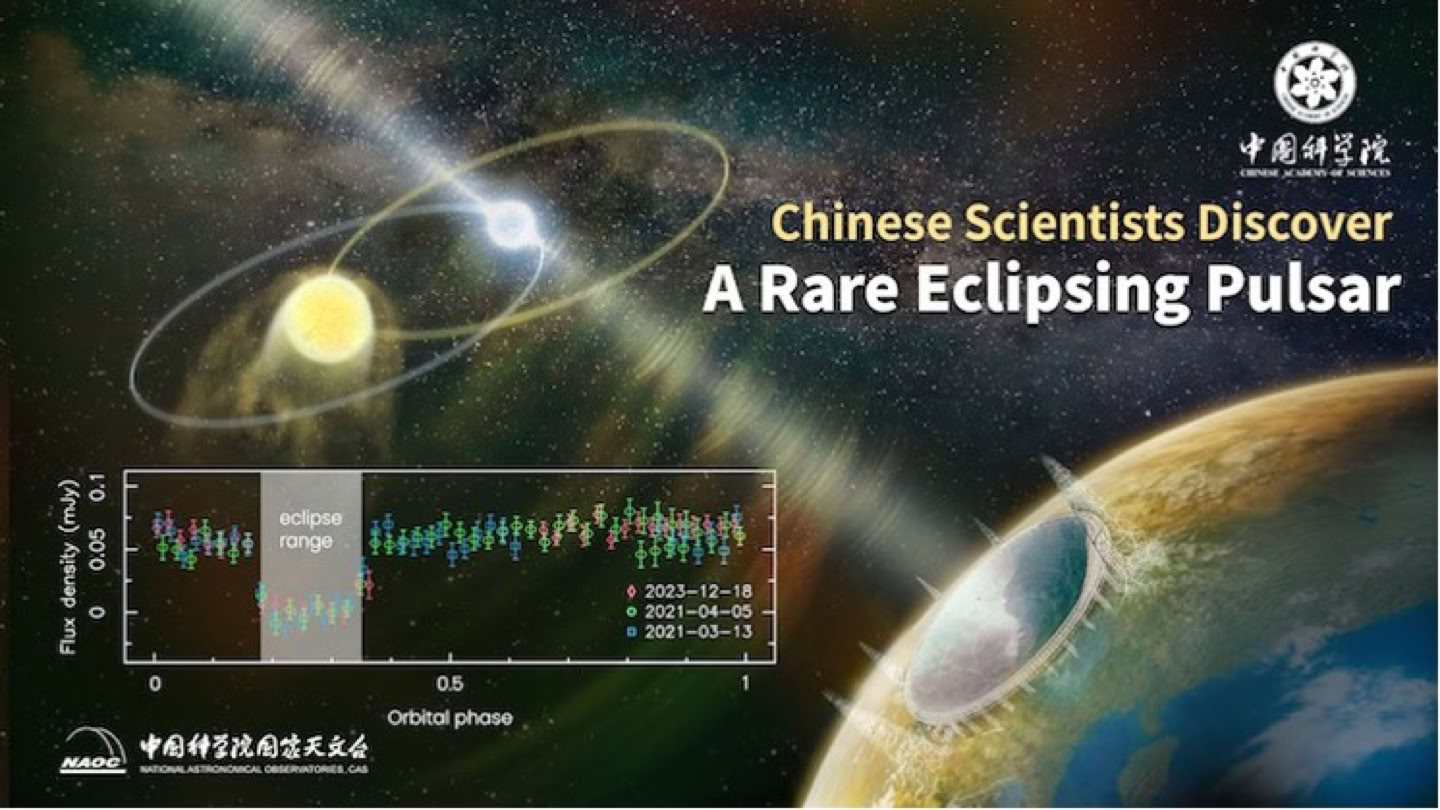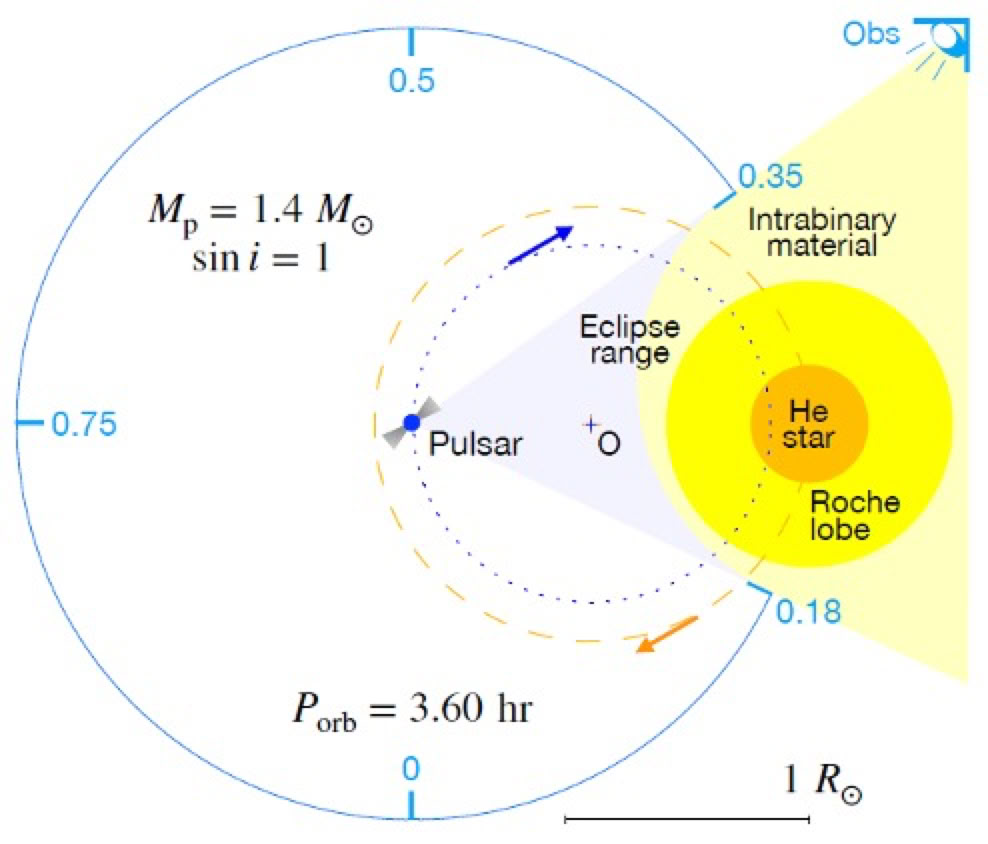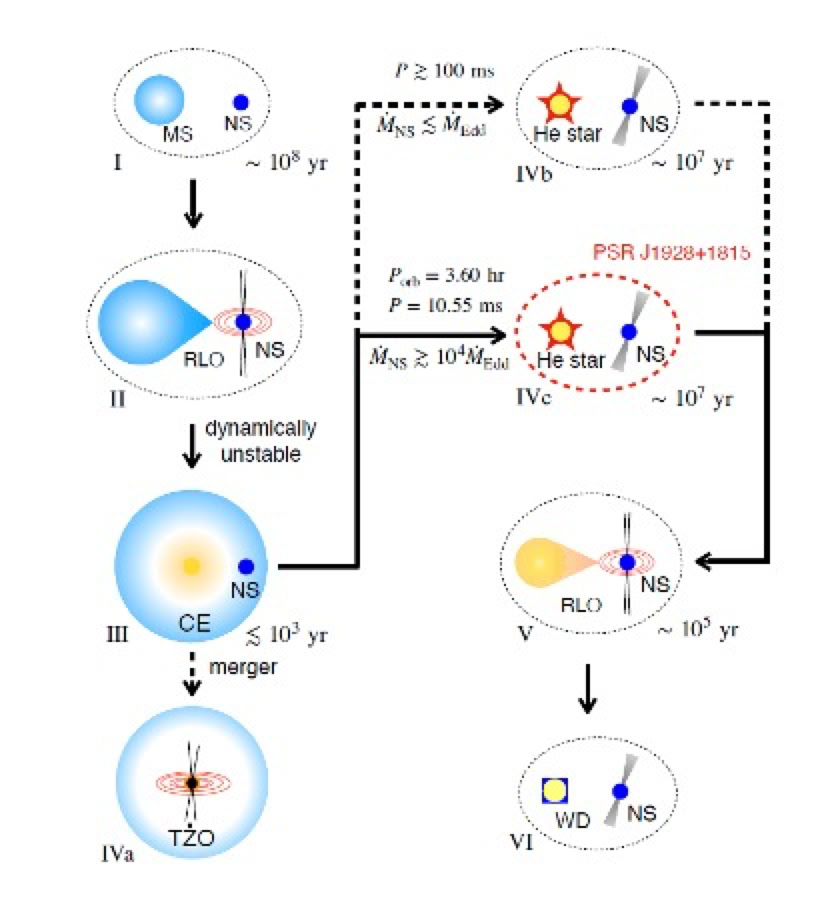by Alice Păun, PhD student
Image courtesy of: Bureau of International Cooperation, Chinese Academy of Sciences
Although binary systems consisting of a pulsar and a helium star have been observed before, never until now has such a binary system been observed right in our own galaxy. In 2021, the FAST (Five-hundred-meter Aperture Spherical radio Telescope), during the “Galactic Plane Pulsar Snapshot survey”, observed an eclipse of the pulsar PSR J1928+1815.
At present, there is not yet a complete understanding of how these binary systems form and evolve. According to what we know, however, in a binary system of two stars, one of them tends to expand so that its atmosphere envelopes the other. As mass is transferred from one star to the other, their orbit shrinks over a period of approximately 1000 years, and the next stage is either that the two stars merge or, alternatively, that this atmosphere is ejected.
Considering the case observed with FAST, the binary system is composed of a star – neutron-star pair, and in these conditions, when the atmosphere is ejected, a helium star and a pulsar are formed. The latter is a neutron star that rotates rapidly and emits pulses in the radio band at a rate of hundreds of pulses per second. Thus, the helium star can eclipse the pulsar over the course of its orbit around it, causing “gaps” in its detection due to the shielding of the emitted radio signal. The time it takes for the two stars to complete one orbit around each other is 3.6 hours, and for 1/6 of this period, the pulsar is eclipsed and its signal cannot be detected.
Image source: Z. L. Yang et al. Science388,859-863(2025). DOI:10.1126/science.ado0769
Over time, this binary system evolves into a system made up of two compact objects that merge and generate a new source of gravitational waves.
Image source: Z. L. Yang et al. Science388,859-863(2025). DOI:10.1126/science.ado0769
References:
1. Z. L. Yang et al., A pulsar-helium star compact binary system formed by common envelope evolution. Science388,859-863(2025). DOI:10.1126/science.ado0769
2. https://physicsworld.com/a/short-lived-eclipsing-binary-pulsar-spotted-in-milky-way/


